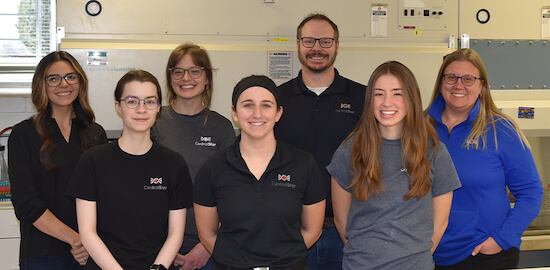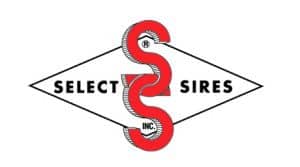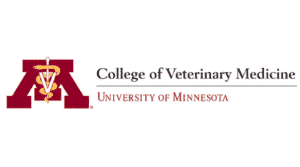Scientific Solutions
AntelBio™ delivers scientific solutions through collaborative research in bovine disease, genetics, and production.
As a business unit of CentralStar Cooperative, AntelBio™ delivers scientific solutions through collaborative research in bovine disease, genetics, and production.
Research and development are at the core of CentralStar’s vision. AntelBio works to expand the product and service portfolio for dairy and beef producers through collaboration with industry allies. We promote innovation and discovery to equip producers with the tools needed to drive the dairy industry forward.

CentralStar Research Team L to R: Chaelynne Lohr, Kyra Schlenkermann, Kelsey Brigham, Kait Houghton, Casey Droscha, Hannah Davis, Kara Parsons.
OUR RESEARCH
The AntelBio laboratory is equipped with modern molecular biology technology, biotechnology, and genomics enabling genetic discovery, molecular diagnostics, and data innovation.
Molecular Biomarker Discovery and Detection of Organisms
Delivering informative and cost-effective pathogen detection, novel quantitative assays, and herd-specific diagnostic programs.
Genomic Discovery
Development of genomic tools to find markers for disease resistance, fertility, and longevity, as well as real-time genotyping tools for routine identification of value-added genetics (A1/A2).
Data Analytics & Innovation
Continual construction of data analytic tools to aid in herd management through a comprehensive database and biorepository. Systematic phenomic profiling of dairy cattle for genomic discovery.
Automation
Engineering, evaluating, and implementing modern automated solutions to laboratories, field staff, and producers for more efficient and productive endeavors.
Dairy Herd Information (DHI)
Supporting the DHI system through strategic partnerships to bring about the next generation of milk component analyses through mid-infrared spectral data.
Peer Reviewed Studies
Huser SM, Larson RL, Taxis TM, Almaraz JM, Reif KE, Weaver B, Amrine DE, Bartlett PC.
Am J Vet Res. 2022 Dec 21;84(2):ajvr.22.09.0156. doi: 10.2460/ajvr.22.09.0156.
PMID: 36520647
Identification of BoLA Alleles Associated with BLV Proviral Load in US Beef Cows.
LaHuis CH, Benitez OJ, Droscha CJ, Singh S, Borgman A, Lohr CE, Bartlett PC, Taxis TM.
Pathogens. 2022 Sep 24;11(10):1093. doi: 10.3390/pathogens11101093.
PMID: 36297150
Development of a predictive model for bovine leukemia virus proviral load.
John EE, Droscha C, Cameron M, Stryhn H, Keefe G, McClure JT.
J Vet Intern Med. 2022 Sep;36(5):1827-1836. doi: 10.1111/jvim.16506. Epub 2022 Aug 11.
PMID: 35950569
In the Press
Find the super-shedders in your barn
by Ciarra Lahuis, and Phil Durst
PCR testing can be used to identify the viral level of bovine leukemia virus in the herd.
Reducing the prevalence of bovine leukosis by identifying and removing infectious cows
A Michigan State University (MSU) research group, in collaboration with our cooperative, set out to investigate what effect, if any, BLV infection had on milk production, culling and longevity in cows.
Partnerships









